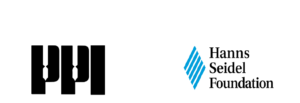SO WE’RE A HIGH-RISK city, again. But, and here’s the rub, hasn’t this been expected all along, when we’ve decided to open things up in calibrated, gradual, but steady way, since way way back? It’s really a dampener, when academic studies like those that a private research group are released like they were election tallies. Just when tourists are beginning to come up, again in sternly limited numbers, here comes the high-risk branding that Baguio gets from all over.
A fair categorization of what has long been here? Surely, the high incidence of cases has been forecast all along, no doubt sparked by the economy loosening up to allow hard-hit industries and businesses to get some kind of a reprieve from worsening losses. Two community outbreaks readily come to mind, the one at Slaughterhouse and the other at Lower Lourdes, all because in the first incident, residents simply threw caution out of the window and went about their drinking ways like there was no tomorrow. That kind of a devil-may-care attitude may have also caused police trainees to infect each other, again because health protocols during in-person gatherings have simply disappeared.
Roll in the fact that in recent weeks, like two weeks back, we’ve had an expanded mass testing activity that averaged about 700 a day, that it was no surprise being high-risk once more. More testing means simply that the asympthomatic ones are showing positivity signs from the intensified testing efforts. Now, we’re getting to know where the virulent strain is locally hitting any which way any host is there. Now, we’re learning how embedded the virus has become, enough to trigger community transmissions.
The good news is that border re-opening (to inbound travelers of whatever stripe) has nothing to do with the latest outbursts. No, it’s not because outsiders are coming in through liberalized restrictions. The virus is right here with us, striking with gay abandon, hitting us like no other simply because it respects no age, no gender, no social or economic status.
The good news is that the rising cases, while being easily detected (and the moderately stricken immediately confined, treated, isolated) are still within the standards of sound management. That means those who are held as positive are quickly identified, their contacts to as high as 37 are speedily known. The confined victims are readily treated and their health condition managed well enough that in 2 weeks’ time, they recover from the diagnosed ailment.
A high-risk city? Sure, the labelling may just cause cancellations of travelers with booked in staycations or leisure trips, but locals like us know better. The tag may be harshly unfair, but rectifying it within context — like our capacity to confine the viral spread to the identified outbreak spots —makes it scientifically realizable to put into effect, as we’ve been effectively doing, better health management practices like no other city of comparable size with ours.
And yet, there’s an emerging rainbow not far. Our tour management bodies — the Baguio Tourism Council and the Council for Baguio Creative City (along with its private partners, the Baguio Arts and Crafts Collectives, Inc. and the University of the Philippines-Baguio) have been in the forefront in recent weeks, just raising the bar on community resiliency, precisely to showcase how ready and able Baguio is in combining economic needs with the demands of health and safety. Nowhere is this more manifest that in the Ibagiw creative city festival that is now on its third running week, staging events that present the proud, rising mood enveloping the creative sector to show that we’re capably getting through.
Tourism stakeholders are showing and leading the way, for their businesses to get back on track, for their workers to reclaim jobs that the pandemic obliterated, for everyone having livelihood opportunities to grow in energized activity. Balancing health and economic needs may have been a tightrope act, but act the government has been doing to get us back into a life without anxiety and fear, a life that both the young ones and the once young can live through.
It may take time before the New Normal sets in, but it should do well for no one not to miss what are glimmers of hope just getting messed up by indications of prolonged anguish, given the up-and-down, here-and-there escalation of numbers. Today, it would be gladsome; in just a matter of hours, things would worsen just as fast.
Yes, it has been that way since three months back, when the virus had been deeply entrenched and ferociously striking at will, without regard to socio-economic and even political inclinations or situations, whether at work or in play, or merely coasting along in an undirected drift. There must be method in today’s madness, but for as long as we remain out of the latter’s realm, content that ways are worth the taking, we’d still be fine and well.
So till when will this pandemic persist, this virus that’s here and everywhere, this anguish that’s building up and down, this affliction that seems without end? For the hopeful in us, soon enough. After all, even in our neck of the woods north of where the viral strain has been on the rampage, it’s been more than two months since quarantine levels here had been downgraded to MGCQ, and what’s another well-calculated time of waiting for the golden light?
Getting the numbers down — as far as the viral spread is concerned — is admittedly a tough task at this stage, when close to 75% of the economy is inching up to full revival, when full-scale testing at reduced costs are being done, when the infected undergo treatment like no other, when tracing others in close contact becomes a an everyday till night affair.
It’s better to bet on what Mayor Benjie is doing, rather than give an ear to what doomsayers are scathingly hollering about. Truly, health and safety are imperatives that brook no compromise. What is real is the reality of knowing how entrenched the virus has become, how deadly it can strike, and how deceptive it can be, to make the struggle even more arduous. Waging wars has never been a walk in the park, especially when the enemy is unseen, striking at will when the willing host is simply without will.
As tourism activates, so do other small businesses dependent on tourist arrivals. True, much damage has been so inflicted on a once robust enterprise, many jobs have either disappeared or dis-materialized, while those able to stay on had to bear cutbacks on income potential. There is no stepping back now, when the gauntlet had been flung; no turning back the tide of hope that grew on the backbone of gutsiness, like no other. Like it or not, the only pathway is right ahead.














